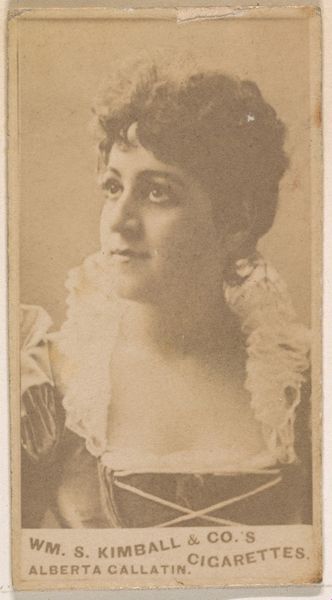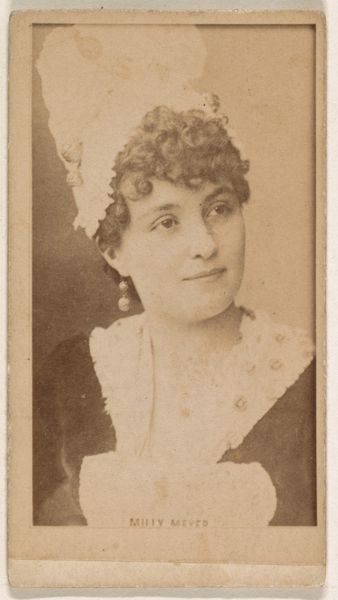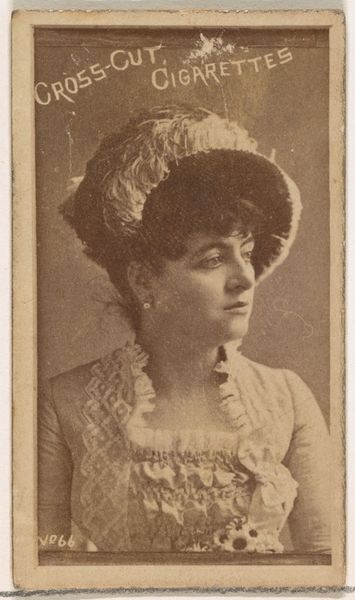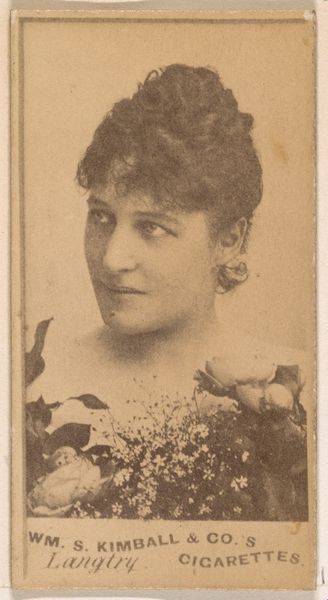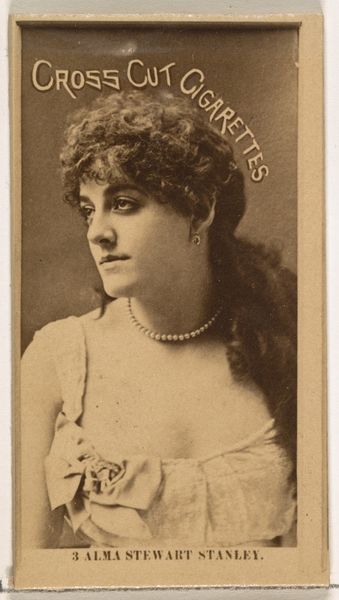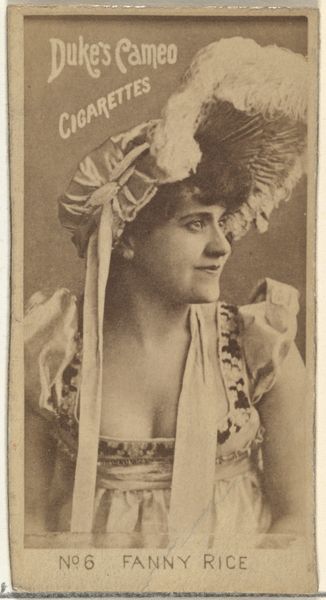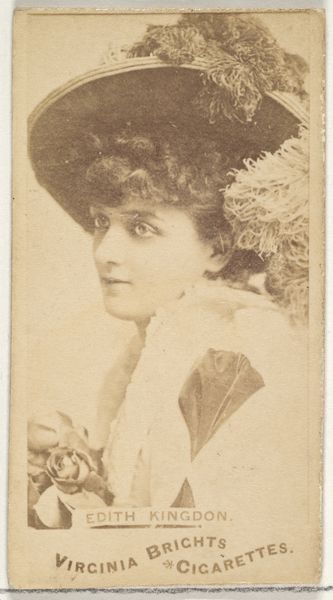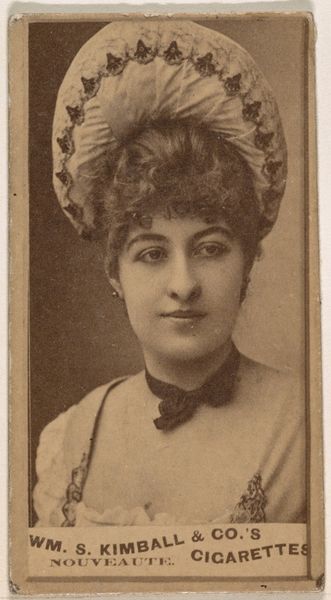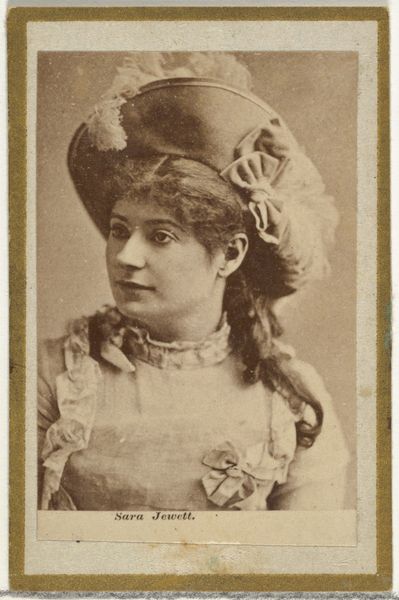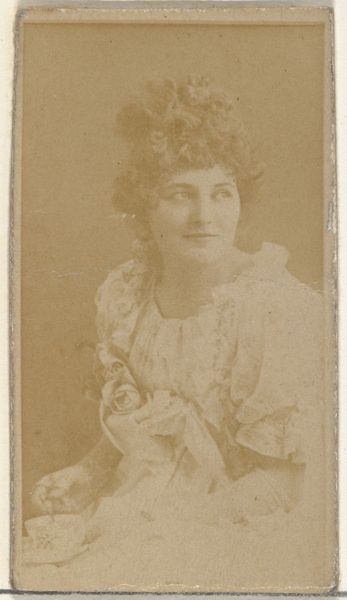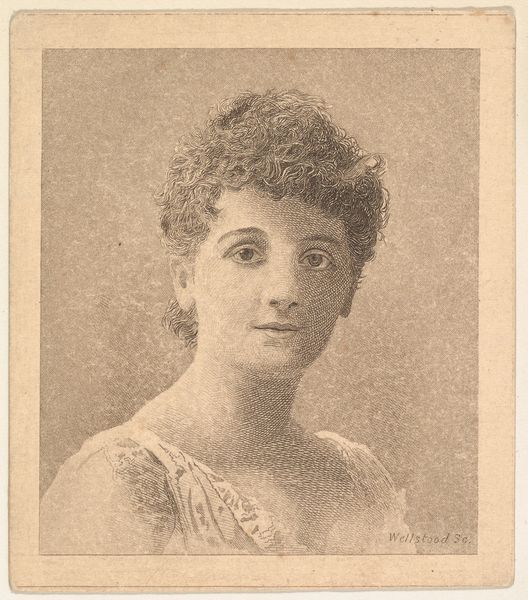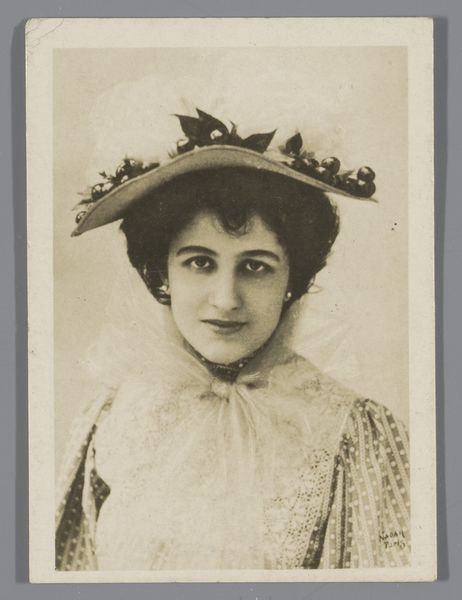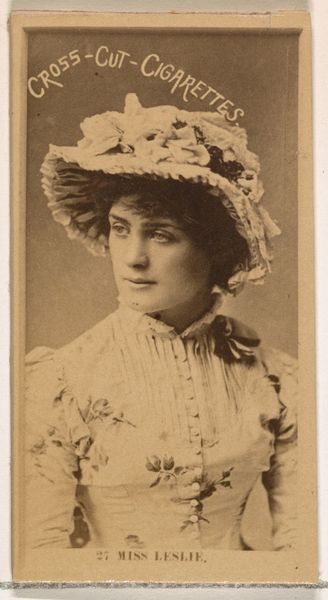
Minnie Palmer (portrait of bust), from the Actresses and Celebrities series (N60, Type 1) promoting Little Beauties Cigarettes for Allen & Ginter brand tobacco products 1887
0:00
0:00
print, photography
#
portrait
# print
#
photography
Dimensions: Sheet: 2 3/8 × 1 1/2 in. (6 × 3.8 cm)
Copyright: Public Domain
Curator: Let’s take a look at this fascinating print from 1887. It’s a portrait of Minnie Palmer, an actress, and it’s part of a series promoting Little Beauties Cigarettes for Allen & Ginter. Editor: Right away, the sepia tone gives it this very dreamy, romantic feeling. It's strange to think of associating this gentle image with cigarettes. The innocence juxtaposed with a harmful product. Curator: It’s interesting you picked up on that feeling. The late 19th century had very specific ideals about beauty and femininity, and this image participates in that construction. Minnie Palmer is carefully posed and styled, radiating respectability which clashes with the product being advertised. Editor: Exactly! And I find the choice to name it "Little Beauties Cigarettes" particularly unsettling, given the objectification it implies. This card normalizes and perhaps even glorifies the commodification of beauty, linking it to consumption in a very direct way. It speaks volumes about gender and marketing strategies of the time. Curator: You’ve touched on how portraiture, even in these commercial contexts, was used to encode cultural values. In terms of iconography, consider the clothing: the hat, the lace, the pearl necklace. All markers of a certain class and virtue meant to assure consumers of the product’s—and, by extension, their own—quality and status. Editor: I agree. The presentation aimed at respectability tries too hard, though. There is something cynical in that attempt. Allen & Ginter tried to appeal to a broad audience, exploiting societal aspirations and desires to turn a profit, never minding the underlying manipulation involved. Curator: This makes me think of other representations of actresses in popular culture then. Often, there was a tension between their public image, as carefully managed performers, and the private lives which were often subjected to intense scrutiny and gossip. Cigarette cards offered a seemingly intimate glimpse, yet it was thoroughly mediated by commercial interests. Editor: Ultimately, a little portrait meant to sell poison, by appealing to fantasies and status symbols... it is very sad to consider now. Curator: Still, it does show how deeply interwoven cultural symbolism and marketing were, then and now. Food for thought.
Comments
No comments
Be the first to comment and join the conversation on the ultimate creative platform.
